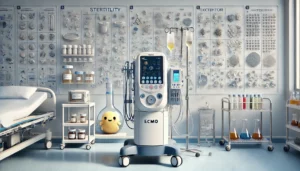
Clinician Prediction of Survival vs Calculated Prediction Scores in Patients Requiring Extracorporeal Membrane Oxygenation
This study compares the accuracy of clinician predictions versus established prognostic scores in determining survival to hospital discharge for patients on extracorporeal membrane oxygenation (ECMO). Conducted from January 2020 to November 2021, the study involved interviews with nurses, perfusionists, and physicians within the first 24 hours of ECMO initiation. The results showed that clinicians, particularly perfusionists and physicians, had better prediction accuracy compared to the RESP and SAVE scores. The findings suggest the potential for developing more accurate prediction tools to guide ECMO eligibility.










